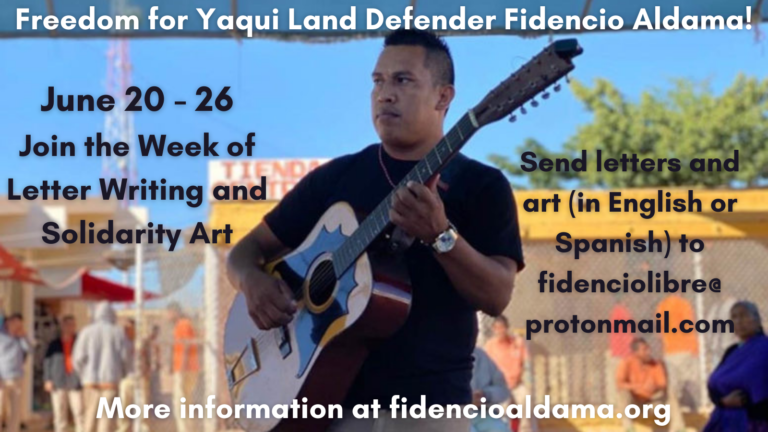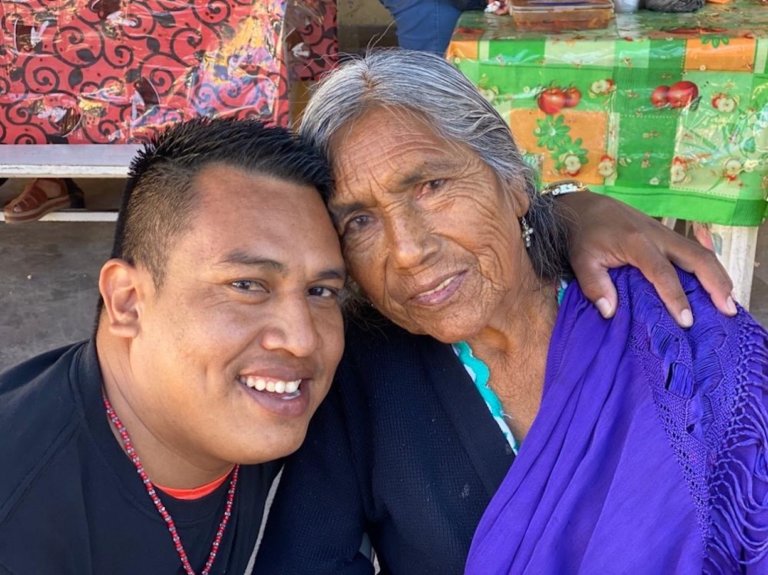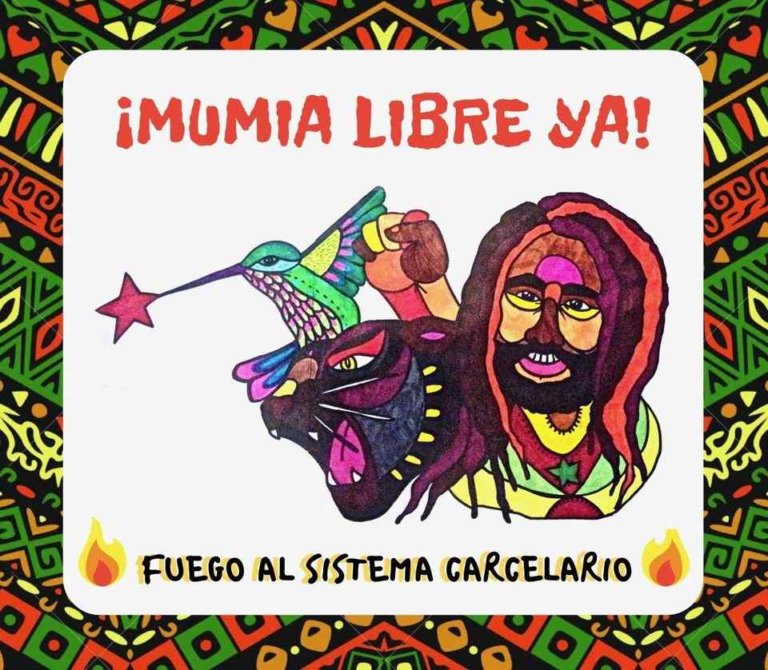November 15th, 2006 – Xochitl writes: Hold on for the ride. If you didn’t get the first day report, please let me know and I’ll send it on to you. And I am sorry that these messages are so long, it is just that the days are full and there is so much going on here. I want to help all of you understand at least my experience of the revolutionary movement here in Oaxaca. Of course, remember that I am just a US person here to show solidarity. The real work, and the real revolution, is with the Oaxacan and Mexican people.
Today was a big day for the protestors. Apparently, today is the final day that Ulises Ruiz Ortiz (URO), the governor of the state, had to demonstrate “governability” to prove to the national government that he should not be removed from office. As a result, there were many different marches. Of course, I didn’t know this until mid-day, so today again began slowly, but not for long. Today’s main project was performing a basic survey of the medical and first aid services that are available here to protestors, and figure out what supplies are needed. The Red Cross, the ambulance, public health and free primary care services here, have refused to provide care for APPO-affiliated people, so they have created an autonomous health care
system.
After breakfast I wandered over to the Santo Domingo planton (encampment) to find out how I could start to gather information. While I was at the table of the human rights observers, a woman ran up saying that she had been sprayed with some chemical and that the police were beating people and spraying chemicals in the zocalo (town square). Me and some friends started towards the zocalo, but all was calm there. I went back to the human rights table, when another person came running, saying that police were beating people down another street. We ran towards it, and found all was calm. I still don’t know exactly what was happening.
I then met some friends of Brad Will, who are trying to find a copy of the autopsy report on Brad. There is now a disinformation campaign, with newspaper and television reports stating that Brad was killed by APPO people. This is in direct contradiction to eye-witness reports and the video that Brad himself was filming when he was killed.
Since I am now buddies with the director of the Red Cross, because of our morgue visit, I hope to help find the autopsy report.
I met up with some friends from that same morgue visit, and they offered to take me to the barricades at Cinco Senores. These barricades protect the University, and the radio station that is an essential organizing tool for the movement. Universities in Mexico are autonomous, meaning that the federal and local police cannot enter without explicit permission from the university officials. On November 2nd, the federal preventive police (PFP in Spanish) tried to enter the university, and after a 7 hour battle they were pushed back. The next day, after enormous outcry from the university and surrounding communities, the PFP stated they were not trying to enter the university, only to secure the streets in the area.
We arrived at the barricades after a 15 minute walk. There are burned out buses blocking each of the 4 roads that enter the intersection. People walk around with home-made rockets. Many are masked with bandanas, one with a silver professional wrestling mask (my favorite). There are bottles lined up in the center of the intersection, ready to be filled with gasoline to make molotov cocktails. But all was calm when I was there (really, mom. don’t worry.)
We walked over to the kitchen area, where a group of people were discussing radical philosophy. What is the goal of APPO? they were asking. Are they willing to continue the fight, (nonviolently or otherwise), while pressure from the state and the countries’ wealthy minority mounts? Does APPO want to form an alternative government, or continue in the current protest mode? What is the relationship between the barricadistas (people guarding the barricade) and APPO? What are their responsibilities to each other? How can the barricadistas work more closely with neighbors in the area around the barricades to build solidarity and mutual aid? This is what I understood. The discussion was rich, nuanced, and rapidfire. I couldn’t catch it all, but I felt like I was in a scene from Les Miserables.
After a bit, my friend J introduced me as a doctor, who had been to the morgue 2 days previous, who wanted to present first aid classes. I was thinking that we would talk about when we might present the classes, and arrange for future meetings. But no, they wanted to do it then. Everyone was enthusiastic, and one man went to let others around the barricade know. After various events, discussions and wanderings, the class began.
I haven’t presented a street medic training for over 2 years. And never in Spanish. But here we were, behind the barricades, with 20 people who had the most urgent need to know first aid.
I started with the most basic of basics. That everyone knew something about first aid and we could all contribute to the class, that I was there at their service and wanted to help but not impose, and that first, above all, do no harm and know your limits.
Then we got going with initial assessment. Well damn, we just did it. 2 people held up a poster, and I wrote notes and drew pictures on the back of it. They were the best, most engaged group I have ever worked with. They had tons of questions, had lots of ideas, and were enormously energetic.
People came and went during the class, but that was fine because we’ll just repeat it, and expand and continue the class other days.
After initial assessment we talked about burns, which they identified as the most common injuries they had encountered.
Then someone was thought to be disappeared over in another area of the barricade, and a bunch of people ran off. Then someone came by and offered us all dinner. The barricadistas insisted that I eat, and delivered me food, a drink, and a chair. So we sat, and ate, and continued to talk about different first aid problems they have encountered, and what they have heard to do to treat them, and what I know.
Then a woman came running up to the table where we were sitting. She had just seen 2 young Oaxaqueños (Oaxacan men) who were taken away by the federal police (PFP). The men were taking photos, and a police offer walked up to them and told them to stop. Then the police took away their backpacks. The woman who witnessed all this approached the police and said that the men were within their rights, that they were Oaxacan citizens, and that it wasn’t right what the police were doing. A group of police officers surrounded the woman, in what seemed like an effort to intimidate her. They then surrounded the two men and started kicking and hitting them, and then took them away in a police car.
The police then took many photos of this woman, and followed her as she headed towards Cinco Senores to report the abduction.
It appears that these two men were abducted for absolutely no reason. This “dirty war” is growing in Oaxaca, with paramilitaries, disinformation in the press, intimidation, and repression of all forms of political speech. People are likening it to the wars in Nicaragua and El Salvador.
I called a friend who could get this woman in touch with the human rights observers, and she talked with him for a long while, describing the situation, the abducted men, and the car (with the license plate!) that took them away. She got off the phone and continued to express her absolute outrage and disgust with the police (and for you street medics out there, I offered, and she accepted, some Rescue Remedy. It helped a bit)
Dusk was approaching, and I wanted to get closer home before it got much darker. Night is the most dangerous time in Oaxaca, when the paramilitaries and PFP can do their dirtiest work. I went over to J, who had accompanied me to Cinco Senores, and asked him what was the safest way to get me home. He called out to the people at the barricades, to find someone to accompany me. There were several volunteers, and we found a taxi (my barricadista friend said “please take the companera to Santo Domingo” the first time I’ve been called a companera. I can’t tell you what that meant to me.)
After a stop to Santo Domingo, where I checked in with the human rights folks and other friends, I headed home. I stopped off at G and N’s house, where we talked about all of the recent events, and the absolute astonishing beauty of the movement and the truly revolutionary nature of the work that is going on here. This is true mutual aid — all that I needed was provided to me. When I said I would need some supplies to teach a particular first aid skill, one barricadista said, “get us a list and we will get the supplies so you can teach us.” I ate, drank and laughed with my companero/a barricadistas, and we were protected by others around us. When I needed to get home, they took care of me. They were showing a movie at the barricade tonight, for the neighborhood and themselves, but I couldn’t stay that late.
So, that’s it for now. If you want to send money or supplies to support the movement, please don’t hesitate to contact me at this email address.
Solidarity,
Xochitl
cuidense@gmail.com
—
source: infoshop.org


